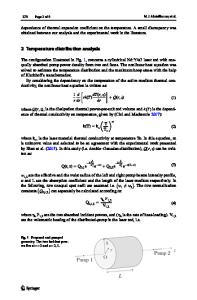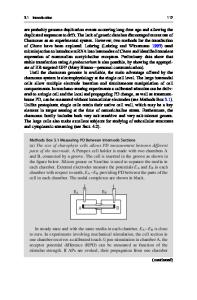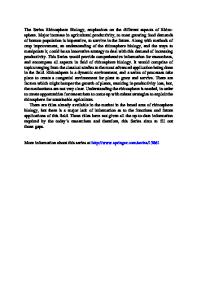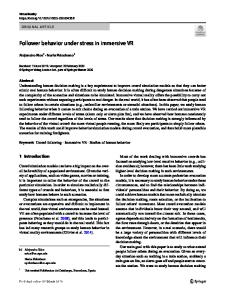The analysis of stress distribution in tempered structural glass with stress concentrators under tension and compression
- PDF / 3,664,553 Bytes
- 16 Pages / 595.276 x 790.866 pts Page_size
- 40 Downloads / 361 Views
(2020) 20:68
ORIGINAL ARTICLE
The analysis of stress distribution in tempered structural glass with stress concentrators under tension and compression Gintas Šaučiuvėnas1 · Tomas Gečys1 · Andrej Mudrov1 · Leonas Ustinovichius1 · Czesław Miedzialowski2 Received: 10 February 2020 / Revised: 4 May 2020 / Accepted: 21 May 2020 © Wroclaw University of Science and Technology 2020
Abstract The paper describes the results obtained from the tensile and compression experimental tests of the structural tempered glass plates with three different types of stress concentrators and without them. The types of stress concentrator have been chosen as close as possible to those usually found in practical situations and also taking into account the cases known from the literature. All tests are performed under the same conditions and with the step of loading 1.0 kN for tension and compression tests up to the limit of 8.0 kN. The stress gradients are measured with an optical device by birefringence. The research is aimed at determining the distribution and the values of stress gradients under tension and compression. The paper considers the problems of determining the stress values and their distribution in the glass plates with various stress concentrators, based on the results of non-destructive measuring, analytical calculations and the numerical simulation. Keywords Tempered glass · Tension · Compression · Stress concentrators · Stress gradient distribution
1 Introduction Using glass as a transparent material of high bending strength and resistance to atmospheric effects for roofs and facades of buildings and even for bridges is constantly growing. The most important problem in designing load-bearing glass structures is the connection of glass elements with each other. Unlike structural elements made of various building materials, the types of the connecting elements for glass members are not many [1, 2, 4, 7, 9, 17, 19, 22]. In practice, bolted joints are usually used [20]; McDonnell and Thompson [8, 10]. These connections are very popular in connecting glass facade‘s elements and glass beams of the glass fin type. The joints of this type may be pre-tensioned (frictiongrip) or not [23]. Their carrying capacity is assessed by testing or by various numerical and analytical methods developed by various researchers [6] and [25]. The main attention was paid by these researchers to the analysis of the effect * Leonas Ustinovichius [email protected] 1
Civil Engineering Faculty, Vilnius Gediminas Technical University, Saul tekio al. 11, LT‑10223 Vilnius, Lithuania
Faculty of Civil and Environmental Engineering, Bialystok University of Technology, ul. Wiejska 45a, 15‑351 Bialystok, Poland
2
of glass stresses developed in the glass caused by loading and the connecting elements, such as bolts or pins, usually causing bearing stresses. Watson [26] and other researchers considered bolted joints from various perspectives, focusing on the size of the residual heat stresses around the holes (cut-outs). The external layers of he
Data Loading...










